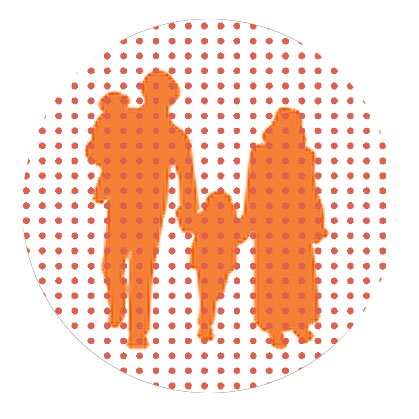Reframe

We can change the images we see in our mind

I
magination is a wonderful thing. Except when it isn’t.
“I keep seeing throngs of people marching down the streets waving foreign flags and chanting threats. I see it at night when I’m lying in bed. I see it during the daytime whenever I hear a noise outside. And every time I see it I feel terrified and sick to my stomach.”
Yes, imagining frightening scenarios produces a flow of emergency chemistry into the bloodstream. Hypervigilance, nausea, panic, and other stress reactions ensue. The special chemistry, meant to prepare us for flight or attack, will interfere with our ability to eat, sleep, problem-solve, or otherwise live a normal, healthy life.
In fact, the only time this sort of chemistry is helpful is when we actually need to run or defend ourselves. When we’re just imagining that we might need to save our lives, the chemistry puts our body into overdrive for nothing, causing undue wear and tear as well as misery.
But how can we stop ourselves from imagining scary scenarios once we’ve started generating them?
“My ten-year-old daughter has a lot of trouble falling asleep at night. Outside her bedroom window there is a creaky old tree and when the wind blows, the branches make all sorts of strange noises, and she feels that there are dangerous kidnappers and/or animals hiding in the leaves, just waiting to attack her. We’ve told her to remind herself that the noises are just the sounds of the trees in the wind. She said that she’s tried to do this but it doesn’t help. She always calls for me or my husband to stay with her in her room until she drifts off.”
This little girl is picturing things, making a movie in her head. Internal visual images create strong emotions. Words (e.g., “Tell yourself it’s just the trees blowing in the wind”) can rarely overcome the power of a picture. The child’s heart beats fast, getting her ready to run and scream.
The Neuroplastic Solution
People who routinely picture terrorists, robbers, or other terrifying images all started off with brains that never pictured such horrible things. This changed on an occasion when they saw or heard of the possibility of violence. The consequent terror speeded up the wiring process that occurs with all learning. Thick neural networks caused the terrifying images to become quickly accessible, easy, and ready to be viewed, again and again. The more it’s viewed — either on the internal movie screen or on an external monitor, magazine page, or elsewhere — the more likely it is to be viewed again, further strengthening the neural network, thereby further increasing the likelihood of generating more frightening images.
Three Scenes
But just as pictures can create the chemistry of the fight-or-flight response, they can create the chemistry of solid security. Try it for yourself or teach it to your child, using the Silva Method’s Three-Scenes Technique:
- Close your eyes and put up an imaginary movie screen in front of you. Make the screen black. Move it just a bit to the right. On that screen, put a movie of whatever you’re afraid of. Look closely at that movie. Now put a big red X across the screen and collapse the movie screen.
- With eyes still closed, imagine a blue movie screen directly in front of you. Put the frightening image on this movie screen as you did before. Now, using your imagination, apply some sort of magical treatment (anything goes, use your imagination!) that completely transforms the terrifying parts of this movie, leaving only beauty and peace on the screen. (For example, let a magic rain wash out all the bad guys or send a magic pill to explode on the movie screen, removing all evil, etc.)
- Eyes still closed, put up a white movie screen a little to the left. On this screen put the movie of the healed, healthy, and safe scene that you just created. Watch this movie, noting how you feel now. Replay this movie as frequently as desired.
Keep in mind that your “magic treatment” employed in step two can be anything at all, no matter how unrealistic it is. A magic word, a special weapon, or any other completely imaginary process or procedure can be employed.
You’ve always known how to imagine yourself into a very bad place. And now you know how to imagine yourself into a very good one.
(Originally featured in Family First, Issue 869)
Oops! We could not locate your form.


